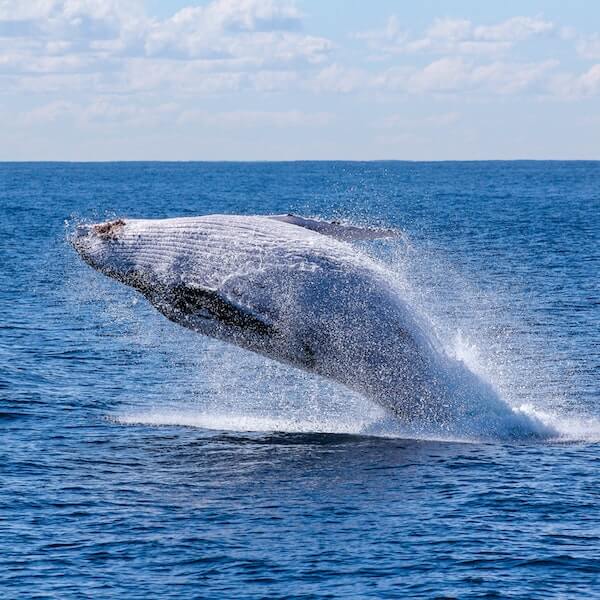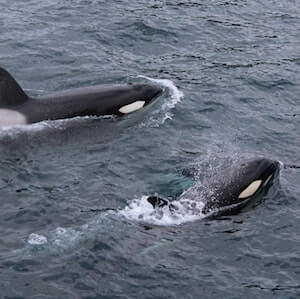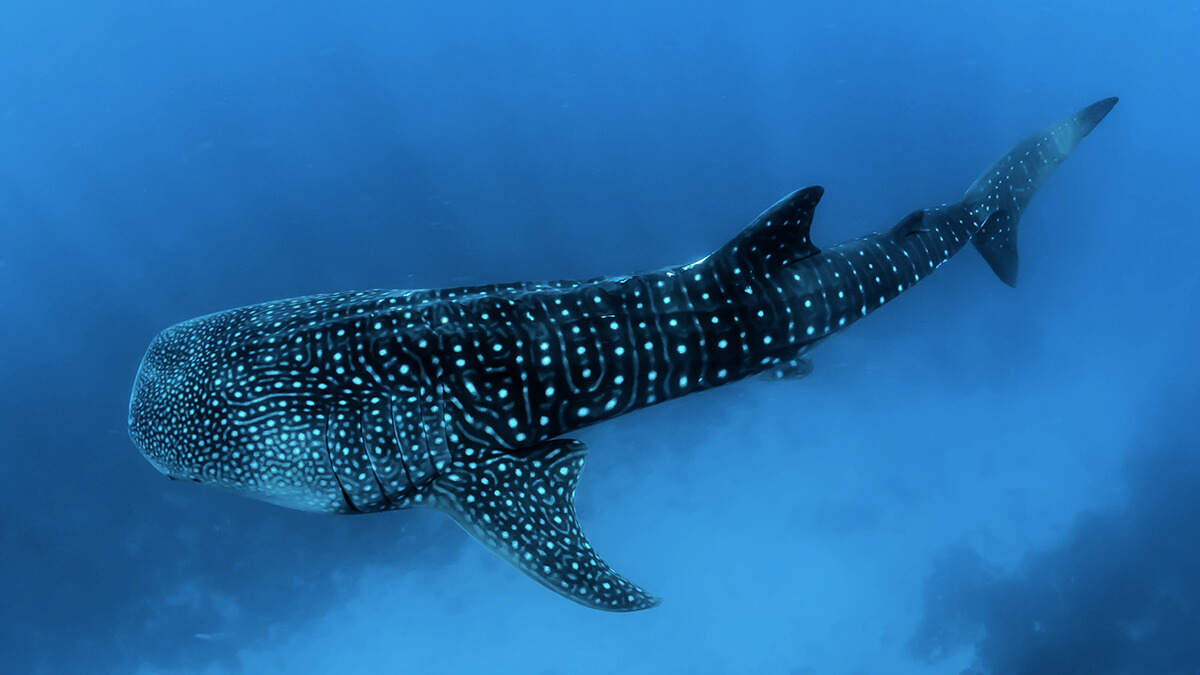If you haven’t had enough Shark Week content, look forward to more amazing aquatic
creatures in Chasing Ocean Giants as it premieres on Tuesday, August 25 at 8:05
PM only on Animal Planet.
Get to know more about the gargantuan inhabitants of the ocean as modern-day sea
adventurer Patrick Dykstra sails through ever-changing waters to uncover the truth
behind the legends surrounding ocean monsters.
While Dykstra’s expedition takes him to different parts of the world such as Panama’s
Pacific coast and a remote Russian coast, Filipinos can rest easy––or uneasy,
depending on how you feel about giant sea creatures––knowing that the Philippine
waters are home to some of the world’s largest animals.
Read on to learn more about our hulking aquatic neighbors and where to find them.
Blue whale
That’s right, the largest animal to have ever lived makes its home in the open Philippine
waters. Blue whales can grow from 80 feet to over a hundred feet but, despite its
intimidating size, it poses no threat to humans and to most of its ocean-dwelling
neighbors since it sticks to a strict krill diet.
Sightings of a blue whale, locally known as bughaw, have been reported off the coast of
Negros Oriental, specifically in Dumaguete and Dauin. Marine Wildlife Watch of the
Philippines (MWWP) says that much is still unknown about the species and encourages
the public to share sightings to monitor their movements and learn more about their
migration patterns.

Humpback whale
Humpback whales can grow up to over 60 feet and have earned their name through the small hump near their dorsal fin. They are beloved by whale watchers because of their curious and frequent behavior of breaching the water’s surface. Although scientists have yet to uncover if this activity serves a practical purpose or if they do it for fun.
Aside from their breaching habit, humpback whales are also known for their fascinating songs, which can last for hours and reach vast distances. There are currently two identified breeding grounds for humpback whales in the Philippines, the Babuyan Islands and the eastern coast of Northern Sierra Madre Natural Park, both in northern Luzon.
False killer whale
Unlike the first two gentle giants, the false killer whale is an active predator that feeds on fish and squid. Growing up to 20 feet, this species is actually a part of the dolphin family and close relatives with Risso’s dolphin and pilot whales.
Not much is known about this species but what scientists do know is that they frequent temperate waters like the Philippine waters. They have been spotted in Tañon Strait in Visayas but increased human activity, such as fishing and tourism, is believed to be the cause of less sightings in the area.

Killer whale
Reaching a maximum length of 32 feet and a minimum of 23 feet, killer whales are the largest dolphins swimming about. Their teeth, which can grow up to four inches, help them hunt fish, penguins, seabirds, and even whales. They are highly social and intelligent creatures who thrive best in the wild with their natural social groups and out of captivity.
Reports of multiple sightings of dolphins, including killer whales, off the coast of Bohol came in last July in the midst of the community quarantine. The Bohol Sea is known to be a breeding ground for whales and dolphins but increased human activity have led to less appearances by these remarkable creatures. Restriction on activities and the subsequent lessened traffic on the waters likely provided an opportunity for marine animals to resurface and splash about freely.
Whale Shark
Of course, the list can’t be complete without mentioning the beloved whale shark or butanding. They are the largest fish and classified as sharks but are known as gentle giants since they can grow up to 18 meters long and mostly feed on krill. Each whale shark has its own unique spot patterns, much like a human fingerprint, which helps scientist in monitoring the species.
Being fond of temperate and tropical oceans, whale sharks have established their homes in different parts of the Philippine waters including Donsol Bay in Sorsogon, Panaon Island in Southern Leyte, and Oslob in Cebu.
Three out of five of the mentioned ocean giants are listed as endangered species namely, the blue whale, humpback whale, and whale shark. However, all of them, along with many other species, have been aggressively hunted in the past for the products that can be made out of their bodies. It was only when both the international community and national authorities stepped up to protect marine life that hunting whales, sharks, and other endangered creatures was made illegal.
Globally and locally, Marine Protected Areas (MPA) were established to manage activities and protect marine biodiversity in specific areas. In the Philippines, MPAs are usually established and regulated by local coastal communities, where they have recognized the value of having a bountiful marine wildlife as it helps in developing tourism and moves them away from solely depending on fishing for their livelihood.
There are about 1,800 MPAs across the country, including Tubabataha Reef in Sulu
Sea, Apo Island in Dauin, and Sumilion Island Fish Sanctuary in Cebu.
Even if humans and marine animals don’t live in the same habitat, it’s clear that human
actions can still impact the life of animals greatly. In fact, the biggest threat to most of
the species mentioned above are humans due to our history of hunting animals. Even
now, humans still pose the biggest threat to aquatic wildlife as our trash end up in the
water and, worse, in the animals’ stomachs. It may not look like it, but properly
disposing of trash and volunteering in beach cleaning drives can help in keeping both
marine animals and their habitats healthy and clean.
Aside from the obvious aesthetic benefit of having clean beaches and waters,
maintaining them to be trash-free avoids contamination from harmful chemicals such as
alcohol and cigarette butts. It also avoids animals being entangled in trash and, the
most dreaded outcome, consuming trash.
Get inspired to help aquatic wildlife by learning more about them. Join Dykstra on his
journey on Chasing Ocean Giants only on Animal Planet, available on Sky Cable CH
194, Cignal TV CH 143, and Destiny Cable CH 40.
Click here for more stories like “Chasing Ocean Giants Philippine Waters”. Make sure to follow and subscribe to our social media accounts: Facebook, YouTube, Instagram, and Twitter.






















